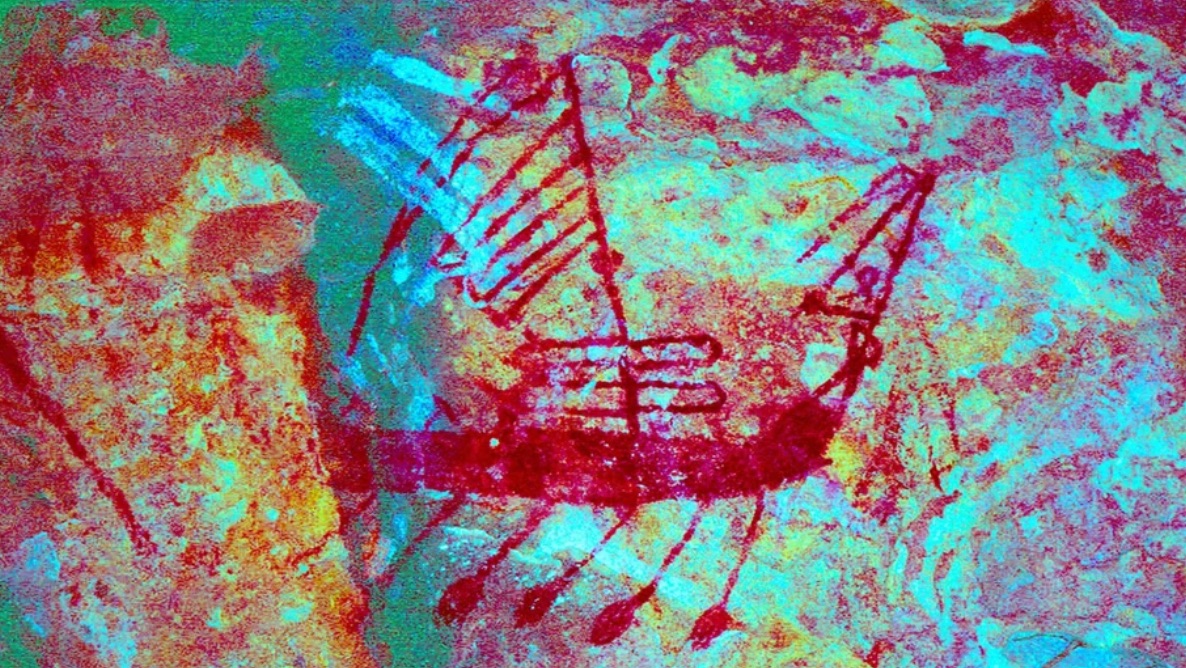
Hundreds of years ago, in a cramped cave, Indigenous people in Australia painted a pair of watercraft whose origins have puzzled archaeologists since the artworks' discovery about 50 years ago. Now, a new study may have solved the mystery: The paintings likely depict "fighting craft" from what is now Indonesia, hinting that there may have been "physical violence" between the Indigenous people and visitors from afar.
Archaeologists identified the boats as being warships from the Moluccas (also known as the Maluku Islands), an archipelago off the eastern coast of Indonesia that's located directly north of Australia, according to a study published May 2 in the journal Historical Archaeology.
"Just these two craft suddenly add another dimension to the sphere of interaction of northern Australia — that Australia is not just some sort of land that's on its own, in the middle of nowhere and is cut off for 65,000 years from everywhere else," study co-author Daryl Wesley, an archaeologist and senior lecturer at Flinders University, told ABC News Australia.
It was already known that the Moluccans had contact with Aboriginal people in Australia. But unlike other Aboriginal rock art depicting vessels that came from the Moluccas, including Macassan prahus (sailing boats that originated in Indonesia), these drawings have warlike features and "display triangular flags, pennants, and prow adornments indicating martial status," according to the study.
"They're fighting craft, decorated with all these pennants and flags and other elements that really set them apart from your usual trading or fishing vessels," Wesley said. "That is really different to our understanding of all the other Macassan ships that are in rock art and in Arnhem Land [in northern Australia]."
Related: Australia's oldest rock painting is an anatomically accurate kangaroo
Due to the level of detail of the paintings, the researchers think that the Aboriginal people who created the rock art had either "intimate knowledge of the craft through long or close observation or from actually voyaging on them" and that they were "linked to trade, fishing, resource exploitation, head hunting or slavery," according to a statement.
The existence of the warship rock art "implies instances of physical violence or at least a projection of power" from the Moluccan people toward the Indigenous Australians. However, more research is necessary to know the rock art's exact purpose, according to the study.

"These motifs support existing ideas that sporadic or accidental voyages from Indonesia to the Australian coastline took place before or alongside regular trepang (sea cucumber) fishing visits," lead author Mick de Ruyter, a maritime archaeologist and associate professor at Flinders University, said in the statement.
Some of the earliest recorded instances of Indonesian island inhabitants sailing to Australia's northern coast occurred in the mid-17th century, according to the statement.
Assuming the Moluccans brought their ships to Australia, the presence of these fighting vessels in Australia "would support a significant departure from the accepted narrative of Macassan coastal fishing and trading" and provides better understanding of contact between the two groups, study co-author Wendy van Duivenvoorde, an associate professor of marine archaeology at Flinders University, said in the statement.
Paul Tacon, a distinguished professor at the Griffith University Centre for Social Cultural Research in Australia who was not involved in the study, told Live Science in an email that the artwork offers a greater understanding of how Aboriginal people recorded their meetings with foreign visitors.
"This rigorous research convincingly shows evidence of contact between Aboriginal people in Arnhem Land, Australia, and mariners from Moluccan islands hundreds of years ago," he said. "Previously, Macassan [boats] have been identified in Arnhem Land rock art, with the oldest dated to between the late 1500s and early 1600s. This is the first time rock paintings of Moluccan watercraft have been identified and it is fortunate that the paintings are so detailed with distinctive features."







